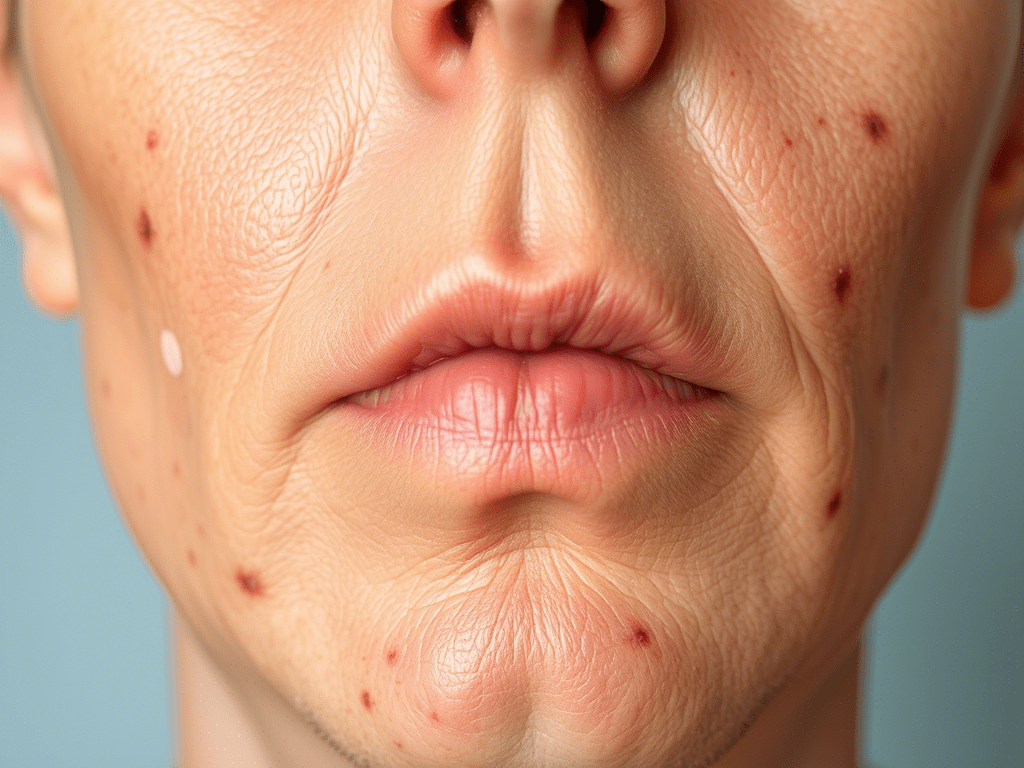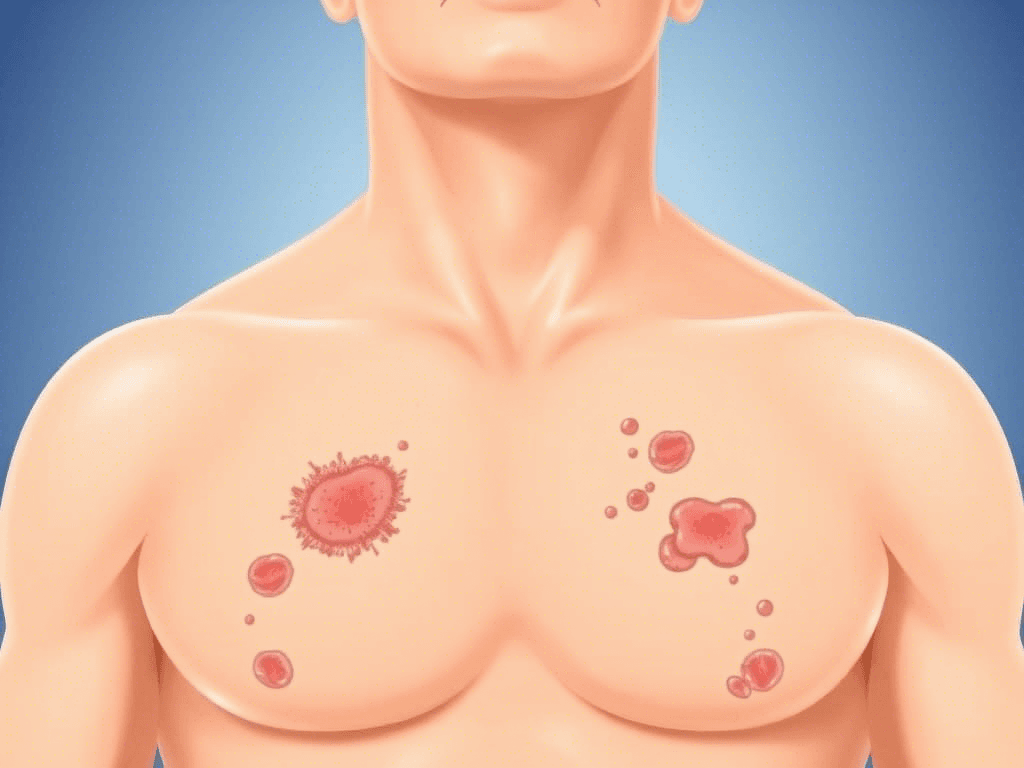Skin pigmentation disorders are more than cosmetic quirks—they’re windows into your body’s complex biology. From the stark contrast of black to white skin conditions like vitiligo to subtle shifts in moles (skin NV), these changes can signal everything from genetic traits to life-threatening cancers like the most common skin cancer, basal cell carcinoma. In this deep dive, we’ll unravel lesser-known connections between pigmentation diseases and malignancies, decode how skin cancer on the chest can masquerade as harmless marks, and reveal cutting-edge treatments that go beyond the scalpel.

Skin Pigmentation Disorders: More Than Meets the Eye
While society often labels pigmentation issues as “flaws,” they’re intricate medical phenomena:
- Vitiligo: An autoimmune condition where melanocytes self-destruct, leaving ghostly white patches. New research links it to thyroid disorders and even increased melanoma risk in rare cases.
- Melasma: Known as “the mask of pregnancy,” this hormone-driven condition creates shadowy face patches. But did you know sun exposure worsens it, creating a vicious cycle with UV damage?
- Albinism: Beyond pale skin, this genetic disorder affects vision and raises skin pigmentation disorders cancer risk due to zero melanin protection.
- Post-Inflammatory Hyperpigmentation: Dark spots from acne or burns can mimic early melanoma, demanding vigilance.
Did You Know?
People with darker skin pigmentation disorders tones are prone to underdiagnosed pigmentation disorders like keloids or dermatosis papulosa nigra, which are rarely discussed in mainstream dermatology.
Skin Cancer Unmasked: From Pimple Imposters to Deadly Scabs
The most common type of skin pigmentation disorders, basal cell carcinoma (BCC), often starts innocently. A shiny bump or a skin cancer scab that won’t heal might be dismissed as a pimple—until it bleeds or grows. Meanwhile, melanoma, though rarer, can arise from a pre-existing mole (skin NV) or as a new dark streak under a nail.
Spotting the Difference: Cancer vs. Benign
- “Is that a pimple?” BCC may resemble acne but persists for months. Squamous cell carcinoma (SCC) can look like a crusty wart.
- Skin Cancer on the Chest: Often overlooked, this area’s thin skin is vulnerable to SCC and BCC, especially in women.
- The Scab That Lies: A recurring scab that flakes and reforms could be SCC, not just dry skin.

Groundbreaking Treatments: Beyond Surgery
While excision remains standard for how skin cancer is treated, innovations are changing the game:
- Topical Gene Therapy: Creams like Tirbanibulin target precancerous cells without scarring.
- PD-1 Inhibitors: Immunotherapy drugs like Pembrolizumab help advanced melanoma patients outsmart cancer cells.
- Blue Light Therapy: For superficial BCC, this painless method destroys tumors with light-activated drugs.
The Hidden Link: Pigmentation Disorders That Raise Cancer Risk
- Vitiligo and Melanoma: Paradoxically, vitiligo patients have a higher melanoma risk due to immune system hyperactivity.
- Albinism: In sub-Saharan Africa, 80% of people with albinism develop skin cancer by age 30 due to relentless UV exposure.
- Dysplastic Nevi (Skin NV): Irregular “atypical moles” are melanoma precursors, especially in families with a history.
Case Study: A 45-year-old woman with vitiligo noticed a pink patch on her chest. Dismissed as “just hypopigmentation,” it was later diagnosed as SCC—highlighting why skin pigmentation disorders requires extra scrutiny in pigmentation disorders.
Prevention Myths vs. Reality
- Myth: “Dark skin doesn’t get cancer.”
Truth: While melanin offers protection, SCC is rising in Black and Hispanic populations, often diagnosed late. - Myth: “Sunscreen is enough.”
Truth: Clothing, hats, and shade are critical—especially for albinism or vitiligo.
Daily Habits for Healthy Skin
- UV Clothing: UPF 50+ fabrics block 98% of rays.
- Vitamin D Balance: Supplement if you avoid the sun due to pigmentation issues.
- Mole Mapping: Use apps like Miiskin to track changes in skin NV or pigmented spots.
FAQs: What You’re Too Afraid to Ask
Q: What is the most common type of skin cancer?
A: Basal cell carcinoma (BCC), often appearing as a pearly bump or non-healing sore.
Q: Could skin cancer look like a pimple?
A: Absolutely. If a “pimple” lasts over a month, oozes, or lacks a whitehead, biopsy it.
Q: Are dark-skinned people immune to skin cancer?
A: No. Bob Marley died of melanoma under his toenail—a reminder that cancer doesn’t discriminate.
Conclusion: Your Skin’s Silent Language
Skin pigmentation disorders and cancers speak in codes—a black to white skin condition might hint at autoimmune strife, while a stubborn skin cancer scab could be a cry for help. By understanding these connections and debunking myths, you empower yourself to act early. Whether it’s adopting UPF clothing or demanding a biopsy for an odd chest mark, your skin’s story is worth decoding.


pvqighszifwjdzdykwxeemowevwgki